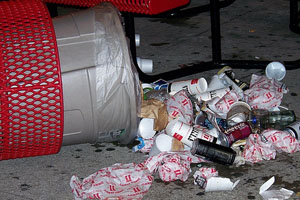
Photo used under a Creative Commons license by flickr user <a href="http://www.flickr.com/photos/lorri37/">Lorri37</a>
Ever wonder what happens to your trash after you toss it? If you live in New York City or Seattle, you may soon get the chance to find out.
The cities are hosting Trash Track, an MIT project enlisting volunteers to trace their waste’s odyssey via electronic tags. By forcing people to confront how their garbage impacts the environment, program directors hope to inspire more recycling. Come September, the project will culminate with an exhibit at the Architectural League in New York City and the Seattle Public Library.
Any cool, eco-friendly ideas you’ve heard about recently? Post in the comments section below.














